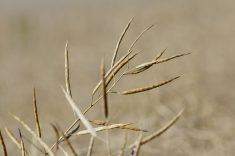Winnipeg | Reuters – Canadian farmers are likely to reap a smaller canola crop in 2019-20 due to reduced plantings and dry conditions, consultancy FarmLink Marketing Solutions said on Thursday after a crop tour of the prairie provinces.
The Grain World tour on Tuesday and Wednesday, organized by FarmLink, visited fields in Alberta, Saskatchewan and Manitoba to observe conditions and calculate yield estimates.
Dry conditions parched soils across much of the Canadian Prairies for three years, raising fears about this year’s crops surviving, until rains fell in June and July.
Read Also

India slaps 30 per cent import duty on yellow peas
India has imposed a 30 per cent duty on yellow pea imports with a bill of lading date on or after Nov. 1, 2025.
“To kill the crop, you need persistent drought. The early season drought may have cut the top end off yield, but crops can recover,” according toFarmLink’s presentation in Regina, Saskatchewan.
FarmLink estimated an average Canadian canola yield of 39.9 bushels per acre in 2019-20, up slightly from 39.8 bushels a year earlier. The crop may produce 19 million tonnes, down from 20.3 million a year ago, after farmers planted less.
Crops looked above average in Saskatchewan, Canada’s main crop-producing province, and more variable in Manitoba and Alberta, FarmLink said. Canola crops, many of which were planted late, are at risk of damage from an early season frost, the company said.
ICE Canada November canola futures dropped 0.6 percent.
The crop tour estimated an average Canadian wheat yield, excluding durum, of 52.1 bushels per acre, the same as last year.












